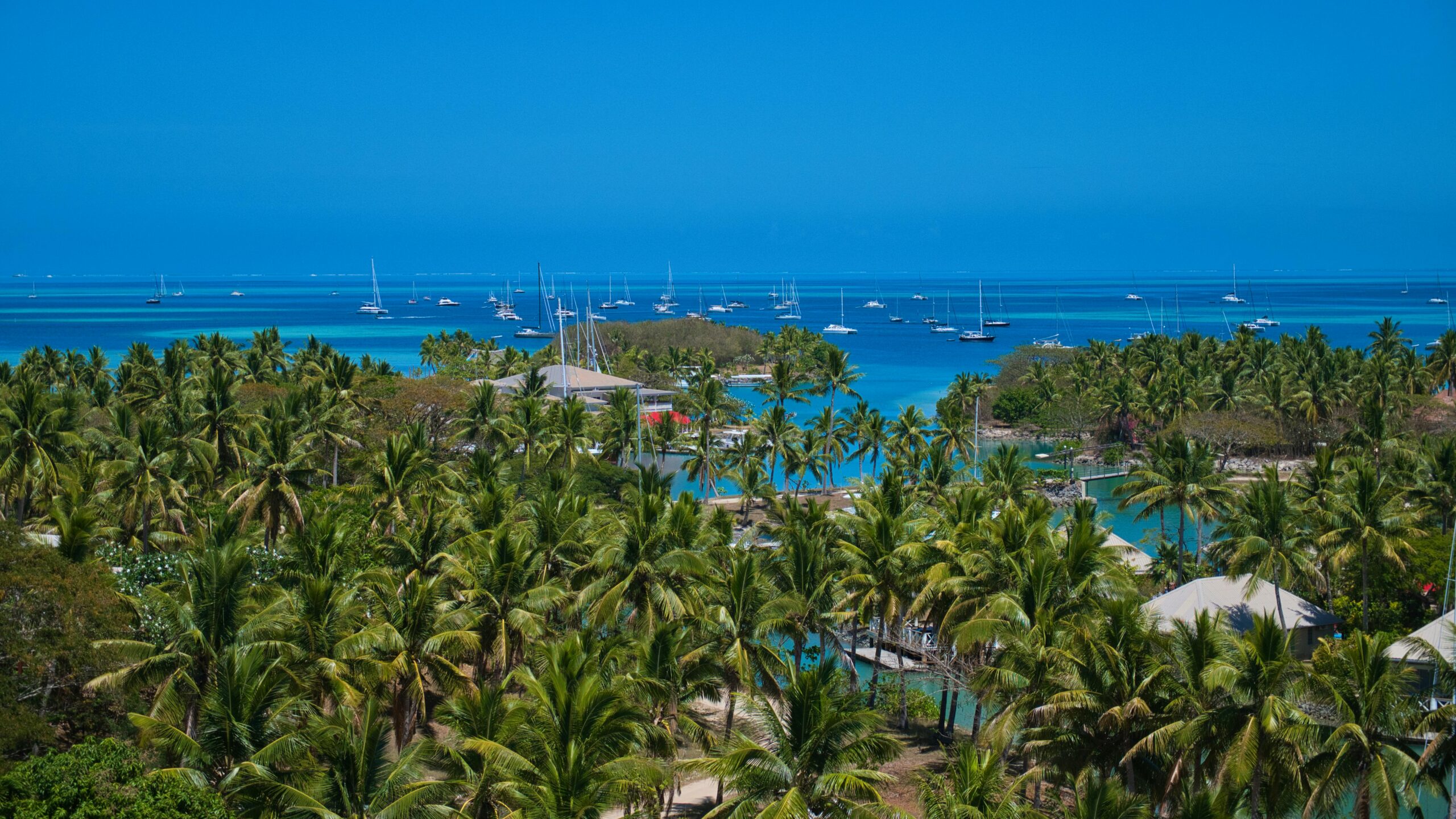Travel in Fiji

Where culture, nature, and adventure meet in the South Pacific
Fiji is a diverse and welcoming island nation of over 330 islands, celebrated for its white-sand beaches, vibrant coral reefs, lush interiors, and deeply rooted traditions. While it’s often associated with luxury honeymoons and beachside resorts, Fiji also offers authentic cultural experiences, remote jungle hikes, world-class diving, and warm hospitality at every turn. From the main island of Viti Levu to the far-flung Lau Group, every traveler finds something unique here.
How to Get to Fiji
Most travelers arrive at Nadi International Airport (NAN), located on the western side of Viti Levu. It’s the hub for both international arrivals and domestic island connections.
- Direct flights operate from Australia, New Zealand, the U.S. (Los Angeles, San Francisco), Hong Kong, Singapore, and some Pacific islands.
- Fiji Airways is the national airline, offering regional and domestic service across the islands.
- Domestic travel is easy via small aircraft, catamarans, or private water taxis, especially to popular island groups like the Mamanucas and Yasawas.
Travelers continuing to outer islands such as Taveuni, Vanua Levu, or Kadavu should plan for connecting flights or longer ferry rides — but the journey is half the charm.
What to See in Fiji
Fiji’s beauty is both coastal and inland, natural and cultural. Here’s an overview of the key highlights:
Viti Levu, the main island, is where you’ll find urban life in Nadi and Suva, as well as beach resorts along the Coral Coast. Inland, waterfalls and highland villages await in the Namosi Highlands and Navala region, where traditional bure homes and village customs remain strong.
The Mamanuca Islands, just off the coast of Nadi, are postcard-perfect: think crystal-clear lagoons, soft sand, and day cruises. These islands are popular with couples and families, and easy to reach by catamaran or speedboat.
Further north, the Yasawa Islands offer a more rustic and untouched version of paradise. These volcanic islands have minimal development, making them ideal for quiet getaways, beach camping, and connecting with nature.
For cultural depth and nature lovers, Taveuni is a must. Known as the “Garden Island,” it features tropical rainforests, rare birdlife, and access to Bouma National Heritage Park. It’s also a base for diving Rainbow Reef, one of the best soft coral dive sites in the world.
On Vanua Levu, Fiji’s second-largest island, the town of Savusavu is a growing eco-tourism destination, known for hot springs, pearl farms, and yoga retreats.
What to Do in Fiji
Whether you’re an adventurer, beach bum, or cultural explorer, Fiji offers a huge variety of activities.
Snorkeling and diving are world-class, with reef systems like Namena, Beqa Lagoon, and the Somosomo Strait showcasing coral gardens, reef sharks, and manta rays. Certified divers can also experience shark dives near Pacific Harbour — a thrilling, safe, and well-managed activity for thrill-seekers.
Fiji is also deeply cultural. You can participate in a traditional kava ceremony, witness meke dances, or stay overnight in a village, where you’ll be welcomed with open arms. Local life follows a rhythm of community, respect, and tradition — known as “Fijian time” — and visitors are invited to join in.
Land-based activities include hiking to waterfalls, ziplining, whitewater rafting on the Upper Navua River, and hot spring bathing in Savusavu. Many resorts offer wellness programs, yoga retreats, and cultural nights, giving travelers the chance to connect with the islands beyond the beach.
When to Visit Fiji
Fiji has a tropical climate with warm temperatures year-round, averaging between 26°C and 31°C (79°F–88°F).
- The dry season (May to October) is the most popular time to visit, with cooler nights, lower humidity, and excellent conditions for outdoor activities.
- The wet season (November to April) brings occasional tropical storms and higher humidity, but also fewer crowds and lush, green landscapes.
Major events include the Hibiscus Festival in Suva (August), Diwali in Indo-Fijian communities (October–November), and Christmas and New Year, celebrated joyfully across the islands.
Travel Tips for Fiji
Fiji is a safe and easy destination for most travelers. The people are famously friendly, and the infrastructure on main islands is reliable.
- Currency: Fijian Dollar (FJD)
- Languages: English (official), Fijian, and Fiji Hindi
- Transportation: Buses and shared vans (minibuses) are common on large islands; ferries and small planes connect the rest.
- Connectivity: Good coverage on Viti Levu and major tourist areas; Wi-Fi can be limited on remote islands.
- Dress code: Modest clothing is expected in villages. Swimwear is for the beach only.
- Etiquette: Always remove your hat in villages and ask before taking photos. It’s customary to bring a small sevusevu (gift of kava root) if visiting a traditional community.
Fiji is more than just paradise — it’s a welcoming, multi-layered destination that invites you to dive deeper, travel slower, and feel truly connected. Whether you’re sailing between coral islands, learning to cook Fijian-style over an open fire, or simply lying under the stars with the sound of the waves nearby, every day in Fiji offers something meaningful. With easy access, stunning diversity, and an unforgettable spirit of hospitality, it’s no wonder travelers return again and again.